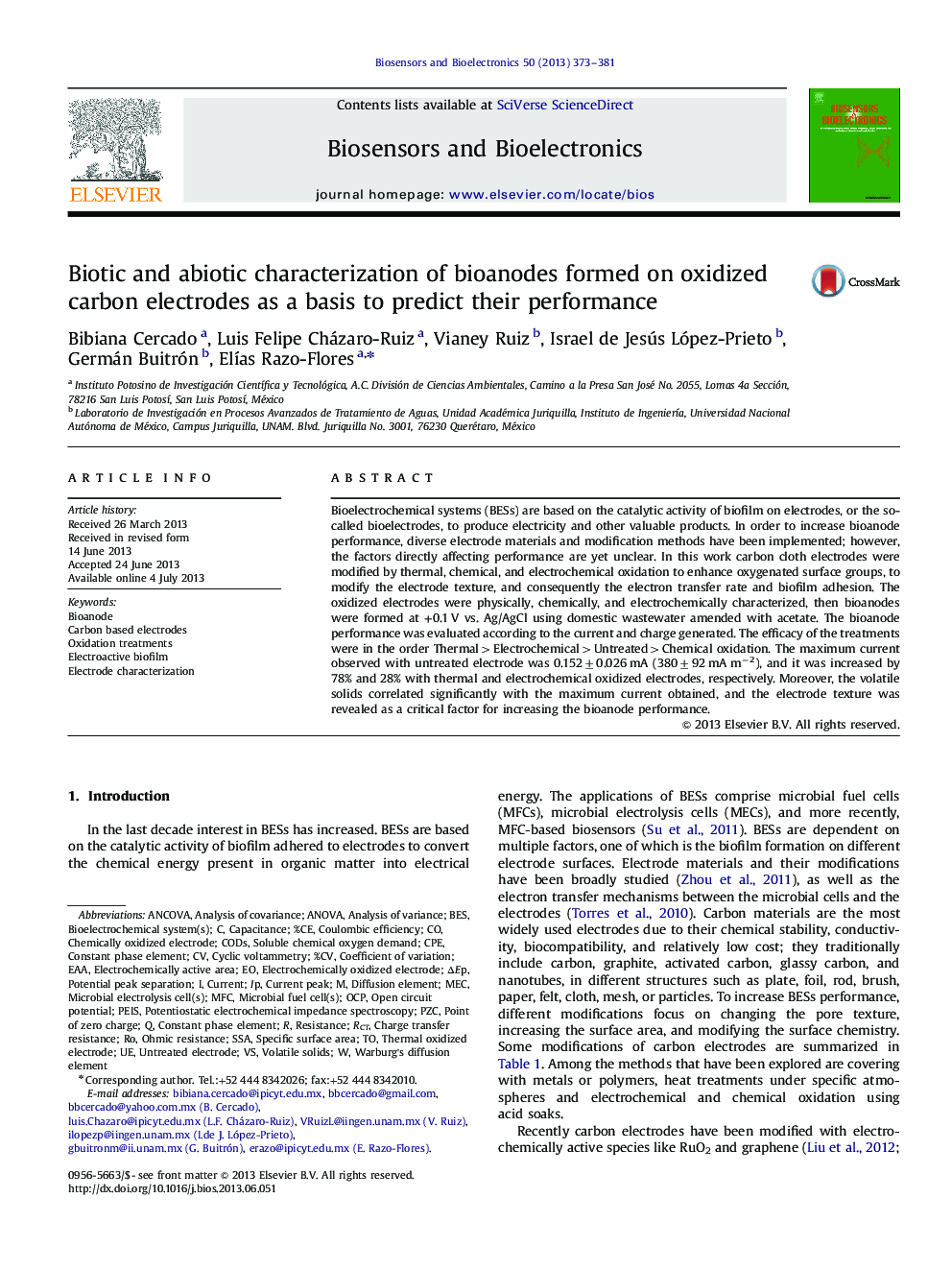| Article ID | Journal | Published Year | Pages | File Type |
|---|---|---|---|---|
| 7233998 | Biosensors and Bioelectronics | 2013 | 9 Pages |
Abstract
Bioelectrochemical systems (BESs) are based on the catalytic activity of biofilm on electrodes, or the so-called bioelectrodes, to produce electricity and other valuable products. In order to increase bioanode performance, diverse electrode materials and modification methods have been implemented; however, the factors directly affecting performance are yet unclear. In this work carbon cloth electrodes were modified by thermal, chemical, and electrochemical oxidation to enhance oxygenated surface groups, to modify the electrode texture, and consequently the electron transfer rate and biofilm adhesion. The oxidized electrodes were physically, chemically, and electrochemically characterized, then bioanodes were formed at +0.1 V vs. Ag/AgCl using domestic wastewater amended with acetate. The bioanode performance was evaluated according to the current and charge generated. The efficacy of the treatments were in the order Thermal>Electrochemical>Untreated>Chemical oxidation. The maximum current observed with untreated electrode was 0.152±0.026 mA (380±92 mA mâ2), and it was increased by 78% and 28% with thermal and electrochemical oxidized electrodes, respectively. Moreover, the volatile solids correlated significantly with the maximum current obtained, and the electrode texture was revealed as a critical factor for increasing the bioanode performance.
Keywords
CoDsΔEpRCTEAACPEPZCOCPBioanodeANCOVASSAMFCBESMECCoulombic efficiencyElectroactive biofilmanalysis of covarianceanalysis of varianceANOVAcurrentvolatile solidsSpecific surface areaCoefficient of VariationCapacitanceconstant phase elementsoluble chemical oxygen demandElectrode characterizationResistanceCharge transfer resistanceOhmic resistancepoint of zero chargeCyclic voltammetry%CVOpen circuit potential
Related Topics
Physical Sciences and Engineering
Chemistry
Analytical Chemistry
Authors
Bibiana Cercado, Luis Felipe Cházaro-Ruiz, Vianey Ruiz, Israel de Jesús López-Prieto, Germán Buitrón, ElÃas Razo-Flores,
